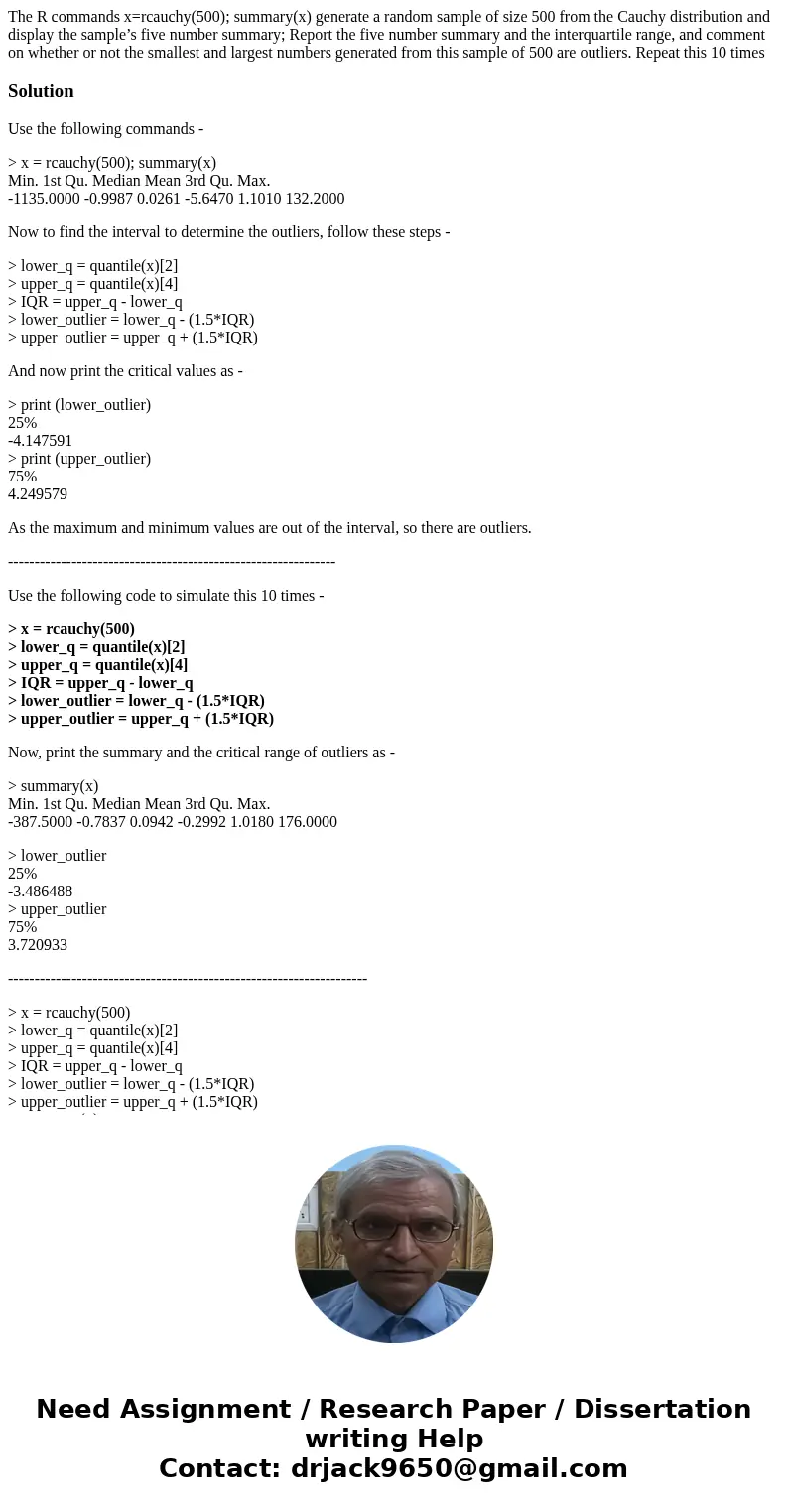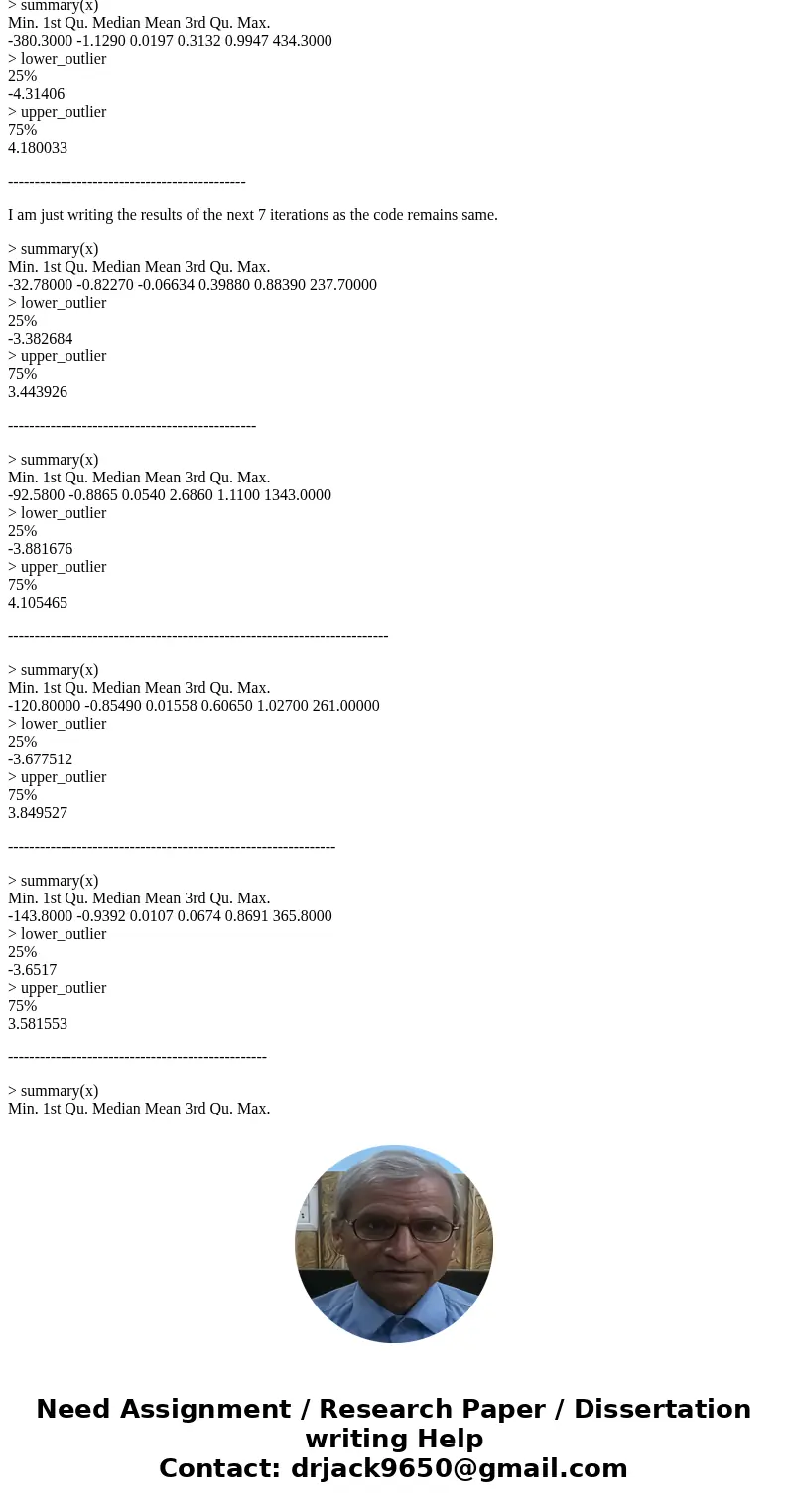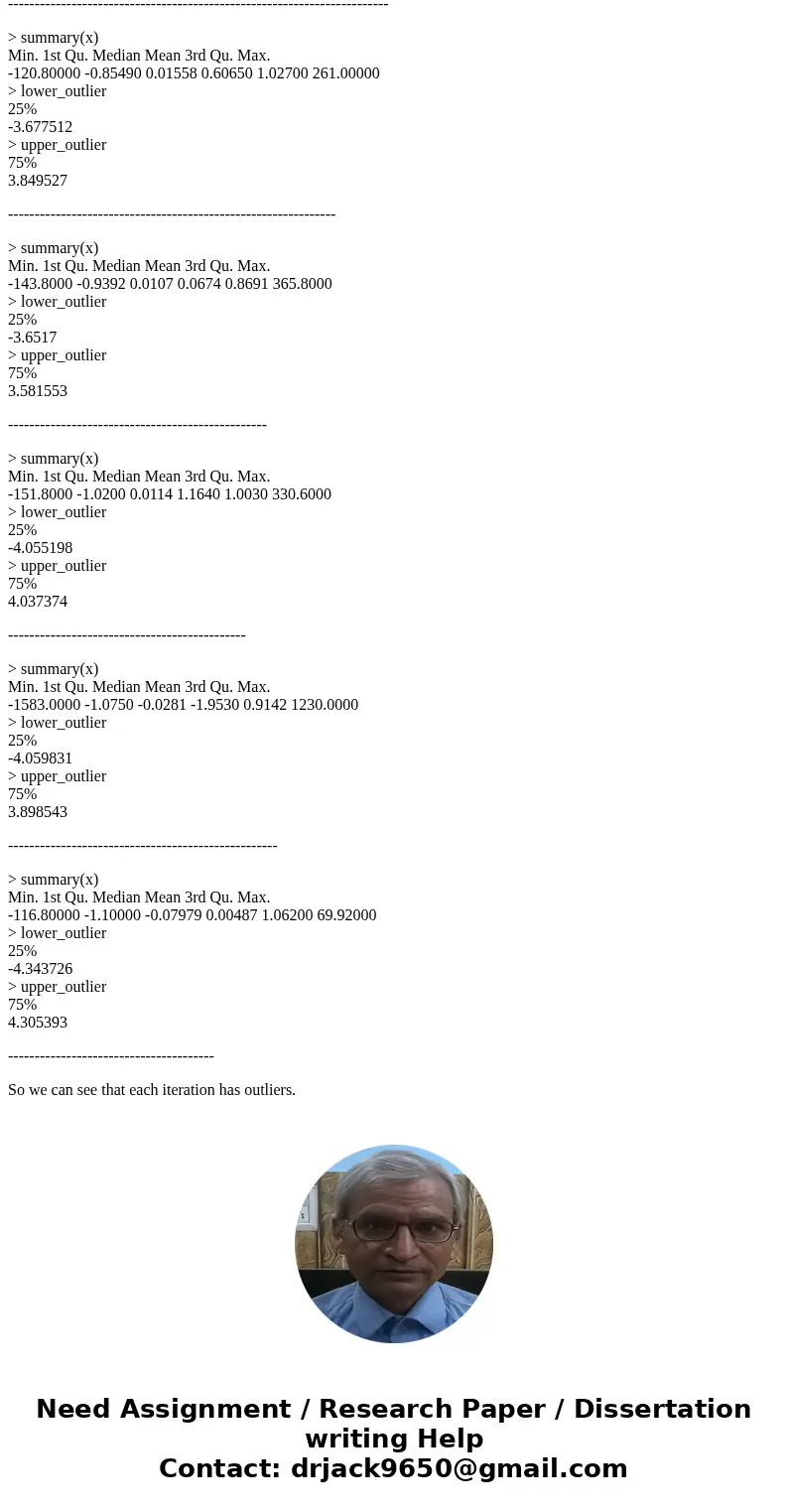The R commands xrcauchy500 summaryx generate a random sample
The R commands x=rcauchy(500); summary(x) generate a random sample of size 500 from the Cauchy distribution and display the sample’s five number summary; Report the five number summary and the interquartile range, and comment on whether or not the smallest and largest numbers generated from this sample of 500 are outliers. Repeat this 10 times
Solution
Use the following commands -
> x = rcauchy(500); summary(x)
Min. 1st Qu. Median Mean 3rd Qu. Max.
-1135.0000 -0.9987 0.0261 -5.6470 1.1010 132.2000
Now to find the interval to determine the outliers, follow these steps -
> lower_q = quantile(x)[2]
> upper_q = quantile(x)[4]
> IQR = upper_q - lower_q
> lower_outlier = lower_q - (1.5*IQR)
> upper_outlier = upper_q + (1.5*IQR)
And now print the critical values as -
> print (lower_outlier)
25%
-4.147591
> print (upper_outlier)
75%
4.249579
As the maximum and minimum values are out of the interval, so there are outliers.
--------------------------------------------------------------
Use the following code to simulate this 10 times -
> x = rcauchy(500)
> lower_q = quantile(x)[2]
> upper_q = quantile(x)[4]
> IQR = upper_q - lower_q
> lower_outlier = lower_q - (1.5*IQR)
> upper_outlier = upper_q + (1.5*IQR)
Now, print the summary and the critical range of outliers as -
> summary(x)
Min. 1st Qu. Median Mean 3rd Qu. Max.
-387.5000 -0.7837 0.0942 -0.2992 1.0180 176.0000
> lower_outlier
25%
-3.486488
> upper_outlier
75%
3.720933
--------------------------------------------------------------------
> x = rcauchy(500)
> lower_q = quantile(x)[2]
> upper_q = quantile(x)[4]
> IQR = upper_q - lower_q
> lower_outlier = lower_q - (1.5*IQR)
> upper_outlier = upper_q + (1.5*IQR)
> summary(x)
Min. 1st Qu. Median Mean 3rd Qu. Max.
-380.3000 -1.1290 0.0197 0.3132 0.9947 434.3000
> lower_outlier
25%
-4.31406
> upper_outlier
75%
4.180033
---------------------------------------------
I am just writing the results of the next 7 iterations as the code remains same.
> summary(x)
Min. 1st Qu. Median Mean 3rd Qu. Max.
-32.78000 -0.82270 -0.06634 0.39880 0.88390 237.70000
> lower_outlier
25%
-3.382684
> upper_outlier
75%
3.443926
-----------------------------------------------
> summary(x)
Min. 1st Qu. Median Mean 3rd Qu. Max.
-92.5800 -0.8865 0.0540 2.6860 1.1100 1343.0000
> lower_outlier
25%
-3.881676
> upper_outlier
75%
4.105465
------------------------------------------------------------------------
> summary(x)
Min. 1st Qu. Median Mean 3rd Qu. Max.
-120.80000 -0.85490 0.01558 0.60650 1.02700 261.00000
> lower_outlier
25%
-3.677512
> upper_outlier
75%
3.849527
--------------------------------------------------------------
> summary(x)
Min. 1st Qu. Median Mean 3rd Qu. Max.
-143.8000 -0.9392 0.0107 0.0674 0.8691 365.8000
> lower_outlier
25%
-3.6517
> upper_outlier
75%
3.581553
-------------------------------------------------
> summary(x)
Min. 1st Qu. Median Mean 3rd Qu. Max.
-151.8000 -1.0200 0.0114 1.1640 1.0030 330.6000
> lower_outlier
25%
-4.055198
> upper_outlier
75%
4.037374
---------------------------------------------
> summary(x)
Min. 1st Qu. Median Mean 3rd Qu. Max.
-1583.0000 -1.0750 -0.0281 -1.9530 0.9142 1230.0000
> lower_outlier
25%
-4.059831
> upper_outlier
75%
3.898543
---------------------------------------------------
> summary(x)
Min. 1st Qu. Median Mean 3rd Qu. Max.
-116.80000 -1.10000 -0.07979 0.00487 1.06200 69.92000
> lower_outlier
25%
-4.343726
> upper_outlier
75%
4.305393
---------------------------------------
So we can see that each iteration has outliers.



 Homework Sourse
Homework Sourse